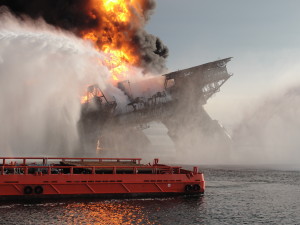
Gulf Oil Spill airs on NGC Thursday, May 27 at 10PM ET/PT
National Geographic Channel is airing what promises to be an epic recount of the explosion and rescue of the 126 oil rig workers by the US Coast Guard. It’s one of America’s biggest environmental disasters and the largest oil slick in the Gulf of Mexico since 1979. Now, as experts scramble to stop the oil leak, NGC will reveal what happened to the Deepwater Horizon as a blowout tore it apart, killing 11 of the 126 men on board, sending oil toward the coastlines of Louisiana, Mississippi, Alabama and Florida.
Below the fold, National Geographic has allowed us to provide our readers with a sneak peak of a couple clips. This will not be one to miss!
Share the post "“Like Looking into the Face of the Devil” – National Geographic Oil Spill Special"


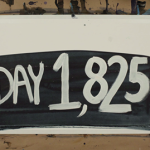
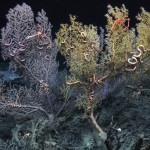
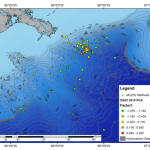
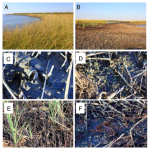
Thats right, Its called black blood.
I thought that was funny
It is amazing how this topic has no activity and we are facing one of the biggest problem and future problem in the US
What’s the most recent update about the oil spill?
We all have a share in the responsibility of such endeavours.Capitalism seperates or milks profit from the environment.If you get any use or enjoyment out of these human ventures,bow your head and look up with a different outlook.I grew up in Galveston,Tx.Had the opportunity to fall in love with the natural environment.Shrimped,flounderd at night with a lantern,and other fishing methods.I am still a meat eater,but I have noticed that all creatures have happiness,anger,fear or a mission.Think recovery,adapt,forgive,repair,safety,success,we all turn into food or waste sooner or later.Try to have a positive outlook and peace,the children,angels and the environment need that more.
That blue thing looks alot like me,wow.Now thats a laugh.
BP successfully tested solution to Gulf spill OSE II
BP to start implementing OSE II in the early spring of 2011
Testing of OSE II by Dr. Tsao of British Petroleum
David Tsao, Ph.D
BioChem Strike Team Leader; Deepwater Horizon
Regarding the Effectiveness of OSE II Remediating Oil from Deepwater Horizon, Blow Out, Gulf of Mexico
The major oil company British Petroleum tested OSEI Corporation’s product called Oil Spill Eater II (OSE II) at Louisiana State University from November 2010 through January 2011. Relevant sections of BP’s BCST (Bio Chem Strike Team) test results and summary “interim report” are attached.
British Petroleum formed a group named the Bio Chem Strike Team (BCST). Under the direction of Dr. Tsao, BCST was established in response to the Deepwater Horizon incident by the Alternative Response Technology (ART) program. The BCST consisted of experts from BP, LSU, LDEQ (Louisiana Department of Environmental Quality), USCG (U.S. Coast Guard), OSPR (California), SCAT, and highly experienced oil spill response consultants. Furthermore, BCST operated in conjunction with advice from EPA and NOAA.
OSE II was then slated for testing and the tests were started in November of 2010, and concluded in January of 2011. The tests were very thorough and measured several pertinent aspects in regards to remediating hydrocarbons/oil. The tests were conducted with Gas Chromatograph Mass Spectrometry EPA test procedures. Bacteria counts, as well as dissolved oxygen, nitrogen, and phosphorous levels were measured, and PAH and Alkane degradation was quantified.
The results from the tests of OSE II were excellent and demonstrated the statements we have made to BP regarding the effectiveness of the product as being factual.
OSE II showed a great ability in the closed laboratory test to be able to remediate PAH’s, as well as the Alkanes. In fact, by the conclusion of the testing time frame, OSE II had remediated 80% of both components of the oil released by BP which ended up in Bay Jimmy, Louisiana.
This test by a major oil company is the second major testing of OSE II on two of the largest spills on water in the history of planet Earth caused by Man. Exxon tested OSE II in 1989 at Florham Park, New Jersey and discovered OSE II was the most effective product in the world by a factor of better than 90% on the North Slope Alaskan Crude oil from the Valdez spill.
BP has now successfully tested OSE II on their spill in the Gulf of Mexico which is estimated, at this time, to be over 6,000,000 gallons of oil spilled.
Dr. Tsao wrote in his report “After nearly one year since the Deepwater Horizon spill, residual weathered oil remains in many locations. The need for a field trial to establish operational criteria for final bioremediation work plans should be initiated before early Spring 2011.”
The OSEI Corporation has alerted BP that, after over 16,000 spill clean ups in the past 21½ years, the logistics in regard to the successful application of OSE II were worked out some time ago.
The remediation of the PAH’s also verifies that OSE II is an extremely effective first response bioremediation product, and has among its many benefits:
) causes the oil to float which limits the negative toxic impact to the water column or ocean floor of the oil and dispersant
) the reduction of the adhesion properties so the oil cannot stick to birds, grass, rock or sand on shorelines
) the elimination of fire hazard
) proven non-toxic by the numerous formal toxicity tests, the fact that you can safely wash your hands with it, and the TV news program in which Retired Rear Admiral Lively drank some of it
) Boom deployment actually works and can help since OSE II causes oil to float
) OSE II causes the oil to float, because of the method in which it goes to work on the oil, it is still very difficult to see
) defined end point of turning the oil into water and CO2
The above clearly demonstrate that it is the best and only needed oil spill response and that it will, even at this late date, remediate both fresh and weathered oil and dispersant currently in the Gulf.
David Tsao, Ph.D
BioChem Strike Team Leader; Deepwater Horizon